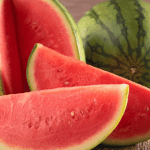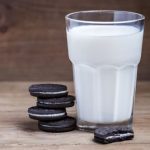 Food
Food  Food
Food  Technology
Technology 10 Futuristic Fungal Technologies
 History
History 10 Not-so-Spooky Events That Also Happened on October 31
 Creepy
Creepy 10 Unsettling Ghost Stories to Tell This Halloween
 Crime
Crime 10 Truly Evil People Who Used Halloween as the Perfect Cover
 Movies and TV
Movies and TV 10 Wildly Different Movie Takes on Nuclear War
 Creepy
Creepy 10 Places Where Folklore Is Alive and Well
 History
History 10 Events That Unexpectedly Changed American Life
 Pop Culture
Pop Culture 10 Cases of Grabbing Defeat from the Jaws of Victory
 History
History 10 Common Misconceptions About the Renaissance
 Food
Food The Fantastic Chemistry Behind Why 10 Popular Foods Taste So Good
 Technology
Technology 10 Futuristic Fungal Technologies
 History
History 10 Not-so-Spooky Events That Also Happened on October 31
Who's Behind Listverse?

Jamie Frater
Head Editor
Jamie founded Listverse due to an insatiable desire to share fascinating, obscure, and bizarre facts. He has been a guest speaker on numerous national radio and television stations and is a five time published author.
More About Us Creepy
Creepy 10 Unsettling Ghost Stories to Tell This Halloween
 Crime
Crime 10 Truly Evil People Who Used Halloween as the Perfect Cover
 Movies and TV
Movies and TV 10 Wildly Different Movie Takes on Nuclear War
 Creepy
Creepy 10 Places Where Folklore Is Alive and Well
 History
History 10 Events That Unexpectedly Changed American Life
 Pop Culture
Pop Culture 10 Cases of Grabbing Defeat from the Jaws of Victory
 History
History 10 Common Misconceptions About the Renaissance
The Fantastic Chemistry Behind Why 10 Popular Foods Taste So Good
We all enjoy eating foods that taste good, but we often don’t fully understand the chemistry that makes them so delicious. In this list, we’re going to take a deep dive into ten foods that everybody loves. We’ll look at the chemistry that creates incredible flavors, textures, and ultimately, unforgettable dining experiences.
Eating is an immensely important experience for human beings: on average, we spend about five percent of our lives eating. After enjoying this list, we’ll all be a little bit better informed about the fantastic chemistry that makes ten popular foods taste so good.
Related: 10 Head-Scratching Food Fads That Have (Mostly) Come and Gone
10 How Pure Sugar Transforms into Hundreds of Toasty, Nutty Flavors in Caramel
The sweet nutty flavor and rich brown color of caramel make it a beloved confection in virtually every nation of the world. The name “caramel” is believed to come from the Late Latin word calamellus, meaning “sugar cane.” The chemical process that turns sugar into caramel is called caramelization, a process that occurs when you heat any type of sugar to a temperature of about 340°F (170°C). The heat breaks down the sugar molecules, which then reform into hundreds of new, flavorful, and complex compounds. It’s these compounds that give caramel its characteristic rich brown color and nutty-sweet flavor. The precise origins of caramel have been lost to antiquity, but many historians believe that Arabic confectioners (candy makers) were boiling sugar to create a hard, crunchy caramel as early as 1000 AD.
The chemical transformation that creates caramel from sugar is a form of pyrolysis, or the breaking down of chemical compounds using heat. Unlike other browning reactions (like the Maillard reaction in fried chicken), caramelization doesn’t require any proteins: it’s purely the decomposition of sugar. As the sugar heats, water is driven off, and the sugar molecules fracture and reorganize into new molecules like nutty-tasting furans, buttery diacetyl, and toasty maltol. The further you cook it, the more of these compounds are produced, and the flavor profile shifts from sweet to toasty and, eventually, to bitter.
For centuries, the historical “hard crunchy caramel” was the only version in existence. Then, a great evolution occurred in the mid-1800s when European and American candymakers discovered that adding milk and fat (like butter) to the boiling sugar softened the caramel’s hard structure. The fat and milk proteins chemically interfere with the sugar’s ability to form a rigid crystal lattice, creating the soft, chewy confection we are familiar with today. It’s this stable emulsion of fat, water, and sugar that made men like Milton S. Hershey (the “Caramel King”) a millionaire before he ever sold a chocolate bar.[1]
9 The Chemistry of Roasting That Unlocks the Savory Richness of Coffee
Coffee is one of the world’s most popular beverages, with over 2 billion cups consumed daily. But the familiar, rich flavor we love isn’t found in the raw coffee bean. The green, raw seeds of the coffee cherry don’t smell or taste very good; all of their complex flavor is unlocked through the chemical transformation of roasting.
This transformation begins when the green beans are heated. First, any moisture inside the bean is dried out. As the temperature rises, the beans turn from green to yellow, and the first browning reactions begin. The key moment occurs at an event called “first crack.” Here, gases and water vapor build up inside the bean, causing it to crack open with a sound like popcorn. This is when the browning reactions rapidly accelerate, creating the hundreds of compounds that give coffee its distinctive flavor and aroma.
These compounds, more numerous than even those in wine, can be split into two main groups. First are the volatile aromatics, which create coffee’s rich smell; these include pyrazines (earthy and smoky), furans (caramel and toffee-like), and acetaldehyde (sweet and fruity). Second are the non-volatile compounds, which are responsible for taste and mouthfeel. These include chlorogenic acids (which provide astringency and sourness), lipids (which give coffee its body), and caffeine (the well-known stimulant).
The length of the roast determines the final taste. Lighter roasts preserve the unique origin characteristics and acidity from where the bean was grown. As the roast gets darker, these unique flavors are replaced by a more generic roast taste, and bitterness increases, much like when making caramel. However, though coffee is immensely popular, the industry does have a dark side that countries, scientists, and communities are trying to deal with. These include significant environmental impacts from deforestation, heavy water use (about 37 gallons for one cup), and chemical pollution.[2]
8 How Yeast Fermentation Creates the Airy Rise and Rich Aroma of Baked Bread
To say that bread is a popular food is an immense understatement. For example, the average American eats between 37 and 53 pounds (17 to 24 kg) of bread per year. Why do people love bread so much? One reason is that bread tastes so good and has such a mouth-watering texture. The airy, pillowy texture and rich, complex aroma of baked bread are not present in its raw ingredients, but are created by a chemical process called fermentation. This process is a great example of edible chemistry, and it all relies on yeast, a living, single-celled organism.
When yeast is mixed with flour and water, it “wakes up” and begins to eat. Flour is full of starches, which are just long chains of sugar molecules, and the yeast uses these sugars as its food. As the yeast digests these sugars, it releases byproducts, most notably carbon dioxide (CO₂) gas. This is the fermentation process. While the yeast is producing this gas, another key reaction is happening: proteins in the flour are linking together with the water to form an elastic, web-like matrix called gluten. This stretchy gluten network traps the CO₂ gas bubbles, preventing them from escaping. It’s this trapped gas that inflates the dough and causes it to rise.
This fermentation is also responsible for bread’s signature flavor. As the yeast breaks down the flour’s starches, it creates a range of new, flavorful compounds that give bread its tangy, yeasty, and complex aroma. When the dough is finally placed in a hot oven, the yeast has one final, rapid burst of activity, producing even more CO₂ that expands the air pockets further. Eventually, the high heat kills the yeast, stopping the fermentation and setting the bread’s airy internal structure.[3]
7 How Citrus Acidity Chemically “Cooks” Raw Fish to Create Fresh Ceviche
Ceviche is an extremely popular dish that originated in Peru. Ceviche is made using a unique chemical process where raw fish appears to be “cooked” without any heat. The dish is made by marinating small pieces of raw fish, such as shrimp, tilapia, or cod, in a strong acid. This is most commonly the juice from limes and lemons, which is acidic enough to chemically change the fish from raw, pink, and translucent to firm, white, and opaque, mimicking the effects of heat.
This transformation is a chemical process called denaturation. Both heat and strong acids can cause proteins to denature. A raw fish fillet is made mostly of water and proteins folded into complex three-dimensional structures. The acid from the citrus juice interacts with the side chains of these proteins, causing the bundles to permanently unfold and reorganize. This unfolding and changing of the protein’s structure is, chemically speaking, the same thing that happens during “cooking.”
To make ceviche, the raw fish is typically chopped into small pieces, which allows the acid to penetrate and “cook” the fish more quickly and evenly. The fish is then submerged in the citrus juice for a period, often an hour or less. It is possible to “overcook” ceviche; if left in the acid for too long, the proteins will curdle and push out all their moisture, making the fish tough and dry. It’s also important to note that while the acid “cooks” the fish, it does not kill bacteria or parasites the way heat does, making it essential to use only very high-quality, fresh, or properly frozen fish.[4]
6 How the Chemistry of Frying and Glazing Makes Donuts So Yummy
Who doesn’t love donuts? Donut sales in 2025 say that everyone in the world loves donuts. Dunkin’ LLC, the world’s most popular donut company, currently operates more than 12,000 locations in more than 40 countries. Its closest rival, Krispy Kreme, has stores in more than 30 countries. In this list item, we’ll explore why people love the taste of donuts so much.
The irresistible appeal of a classic donut comes from its signature flavor and texture combination: a soft, airy, and moist interior covered in a thin, sweet, and crispy shell. This perfect textural contrast is not an accident; it’s the direct result of two rapid chemical processes. The simple ingredients of the dough—flour (starch), eggs, milk (protein), and sugar—are the essential fuel for the two key stages: high-temperature frying and sugar-crystal glazing.
The magic begins when the risen dough hits hot oil, usually around 375°F (190°C). This high heat immediately causes several reactions. First, the water inside the dough flashes into steam, forcing the donut to puff up and creating its light, airy internal crumb. At the same time, the proteins from the eggs and milk, and the sugars in the dough, undergo the Maillard reaction. This is the same chemical browning that creates the crust on bread and the savory flavor of seared steak; in the donut, it creates the golden-brown color and hundreds of new, complex, and delicious flavor compounds. The hot oil also gelatinizes the starches in the flour, which sets the donut’s structure and creates the crisp, delicate outer crust.
The final step is the glaze, a perfect feat of sugar science. The iconic shiny coating is a supersaturated solution of powdered sugar, hot water, and vanilla. Immediately after frying, the hot donut is passed through a “waterfall” of this liquid glaze. The heat from the donut allows the glaze to flow evenly, coating it in a thin, perfect layer. As it cools down in just a few seconds, the water evaporates, and the sugar rapidly recrystallizes, forming a fragile, glassy shell that shatters when bitten. This combination of the warm, soft, Maillard-browned pastry with the cool, sweet, crystalline glaze is what makes the donut so delicious.[5]
5 The Umami Flavors That Make Pizza Taste So Good
Most people can easily identify four basic tastes: sweet, salty, bitter, and sour. There is, however, a fifth taste that is more complex and often harder to describe: umami. The word itself is Japanese, translating to “delicious taste,” and it represents the deep, savory flavor sensation that you might associate with seared meats or rich broths. This satisfying sensation is chemically linked to glutamate, a type of amino acid. This is the same compound found in monosodium glutamate, or MSG. While MSG was once the subject of rumors of not being safe to eat, scientists have confirmed that it is safe to eat and simply serves as a pure source of the umami flavor.
Pizza is an immensely popular food worldwide due in part to the richness of its umami flavors. Its two core ingredients, tomatoes and cheese, are both naturally packed with glutamates. This flavor is then layered and intensified with other umami-rich toppings. Parmesan cheese, for instance, has been described as “pretty much straight umami,” while common additions like mushrooms and cured meats such as ham further build the complex, savory experience. This powerful combination of multiple umami-heavy ingredients is what makes pizza so intensely flavorful.
There are even chefs who deliberately design pizza recipes that have a stronger-than-normal umami flavor. For example, in a blog called Food for Thought, a writer shares a guide for the ultimate umami pizza that includes several umami-rich foods: cured ham, mushrooms, anchovies, and Parmesan cheese.[6]
4 The Sugary and Salty Chemical Secrets Behind Mouth-Watering Ice Cream
I scream. You scream. We all scream for ice cream. In 2023, the global ice cream market was valued at over $76 billion (USD), and it’s projected to increase to over $132 billion by 2032. Ice cream is immensely popular almost everywhere in the world. For example, surveys show that about 97% of Americans like or love to eat ice cream.
The chemistry of what makes eating ice cream such a pleasurable experience is more complex than you would think. Several things have to be combined in the right proportions, because if you simply freeze cream, you would get a rock-hard milk popsicle. Sugar is one of the most important ingredients, but sugar has other essential properties besides just adding sweetness. Sugar molecules dissolve in the water from the milk, which chemically lowers the mixture’s freezing point. This freezing point depression is what keeps the ice cream soft and scoopable instead of freezing solid.
The salty secret and the churning process are also critical to the proper formation of ice cream. The key secret to making great-tasting ice cream is adding rock salt to the ice around the container. This makes the ice melt at a much lower temperature, creating a brine cold enough to freeze the sugared cream. As this happens, the mixture is carefully churned. This churning does two things: it whips in tiny air bubbles to create a light texture, and it also causes the fat globules from the cream to form a rich three-dimensional network. This network is what provides the signature creamy mouthfeel and helps the ice cream to melt slowly.[7]
3 How Lactic Acid Bacteria Give Kimchi Its Fermented Kick and Wonderful Flavors
Kimchi is a national treasure in both Koreas, North and South, and it has been exported to every corner of the globe. Its unique and robust flavor, a combination of sour, spicy, and savory “funk,” is not present in its raw ingredients. This complex taste is created by a wild chemical process fueled by lactic acid bacteria, often called LAB.
The process begins when vegetables like cabbage and radish are salted. This salting draws out water and, crucially, inhibits the growth of undesirable bacteria. This creates the perfect stage for the salt-tolerant LAB to take over. These microorganisms, which include species like Leuconostoc and Lactobacillus, are naturally present on the raw vegetables. Once the stage is set, they begin to feast on the natural sugars in the cabbage and other ingredients.
This feasting, or fermentation, is what creates kimchi’s signature “kick” and complex flavors. As the LAB metabolize the sugars, they release several byproducts. The most important is lactic acid, which builds up and dramatically lowers the pH of the kimchi. This creates the characteristic sour tang and acidic “kick” while also acting as a natural preservative. The bacteria also release carbon dioxide, which gives fresh kimchi its signature fizziness, and a wide array of other compounds that contribute to its unique, funky aroma.
Recent research has shown this process is more deliberate than previously thought. The bacteria’s DNA contains specific genes that are programmed to create these distinctive flavor and aroma compounds. These genes are not active during the entire process. Instead, researchers found they become “highly expressed at the ending phase” of the fermentation. This means the bacteria are genetically programmed to release their most potent flavors and smells at a specific time, transforming the simple salted cabbage into the complex, delicious kimchi beloved worldwide.[8]
2 The Endorphin Effect: How Capsaicin Creates the Pleasurable Pain of Spicy Curry
Spicy curry is not to be underestimated: a young man recently learned this lesson the hard way. The man took part in the “Hottest Curry Challenge,” and the curry scored a flawless victory over him. The man ended up shirtless and writhing in pain after the spicy hot curry broke him.
This intense reaction raises a question: why do people enjoy a food that causes so much unwanted suffering? The answer is a fantastic bit of brain chemistry. Spiciness is not a “taste” like sweet, salty, or sour. It is purely a sensation of pain. This pain is delivered by a chemical compound found in chili peppers called capsaicin.
This molecule has the unique ability to “trick” the human nervous system. All over your mouth and tongue, you have pain receptors, specifically one called TRPV1. These receptors are not designed for flavor; their job is to detect real, physical heat and send a warning signal to your brain. When you sip coffee that is too hot, these are the receptors that scream “Fire!” Capsaicin binds to these exact same TRPV1 receptors and activates them, fooling your brain into thinking your mouth is literally being burned.
Here is where the pleasure comes in. When your brain receives this powerful “pain” signal, it does what it is designed to do: it tries to stop the pain. To do this, it releases a flood of its own natural painkillers, a class of chemicals called endorphins. These endorphins block the pain signals and, as a side effect, create a powerful feeling of euphoria and pleasure, often compared to a “runner’s high.” Your brain may also release dopamine, a neurotransmitter associated with reward and pleasure. This one-two punch of pain followed by a pleasurable, euphoric rush is the “Endorphin Effect,” and it’s what makes that agonizingly hot curry so wonderfully addictive.[9]
1 How the Maillard Reaction and Fat Give Fried Chicken Its Incredible Aroma and Taste
The founder of Kentucky Fried Chicken, Harland Sanders, was born on September 9, 1890. In 1906, he falsified his date of birth and enlisted in the United States Army. He was only in the army for a few months, and he never achieved the rank of colonel, contrary to his later honorary title, Colonel Sanders. For the next several decades, he held a variety of jobs, but his big breakthrough occurred in 1952, the year he franchised his top secret recipe for “Kentucky Fried Chicken.” Fried chicken was already a beloved delicacy in the southern United States, but Kentucky Fried Chicken helped to make fried chicken a global phenomenon.
The incredible appeal of fried chicken comes from its perfect contrast: a savory, golden-brown, and crispy crust surrounding tender, juicy meat. This deliciousness is not an accident. It is the result of two key scientific principles working together at high heat: the Maillard reaction and the physics of hot fat.
The Maillard reaction is one of the most important chemical reactions in all of cooking. It is a complex cascade of reactions that occurs when amino acids, the building blocks of proteins, and reducing sugars are heated together at high temperatures. The batter or breading on fried chicken, often containing flour, milk, or eggs, is loaded with both of these compounds. When the chicken hits the hot oil, this reaction kicks off, creating hundreds of new, complex flavor and aroma molecules. This is what gives the crust its savory, “roasty” taste and its signature golden-brown color.
The hot fat is both a heat source and, more importantly, the secret to the signature texture of fried chicken. When the breaded chicken is submerged, the oil’s intense heat, far above the boiling point of water, instantly boils away the moisture on the very outer layer of the coating. This rapid dehydration is what forms the crispy crust. This newly formed crust then serves a second, vital purpose: it creates a barrier that seals in the chicken’s natural juices. This allows the meat inside the crust to cook gently by steaming in its own moisture, keeping it incredibly tender and juicy while the outside becomes perfectly crisp.[10]








